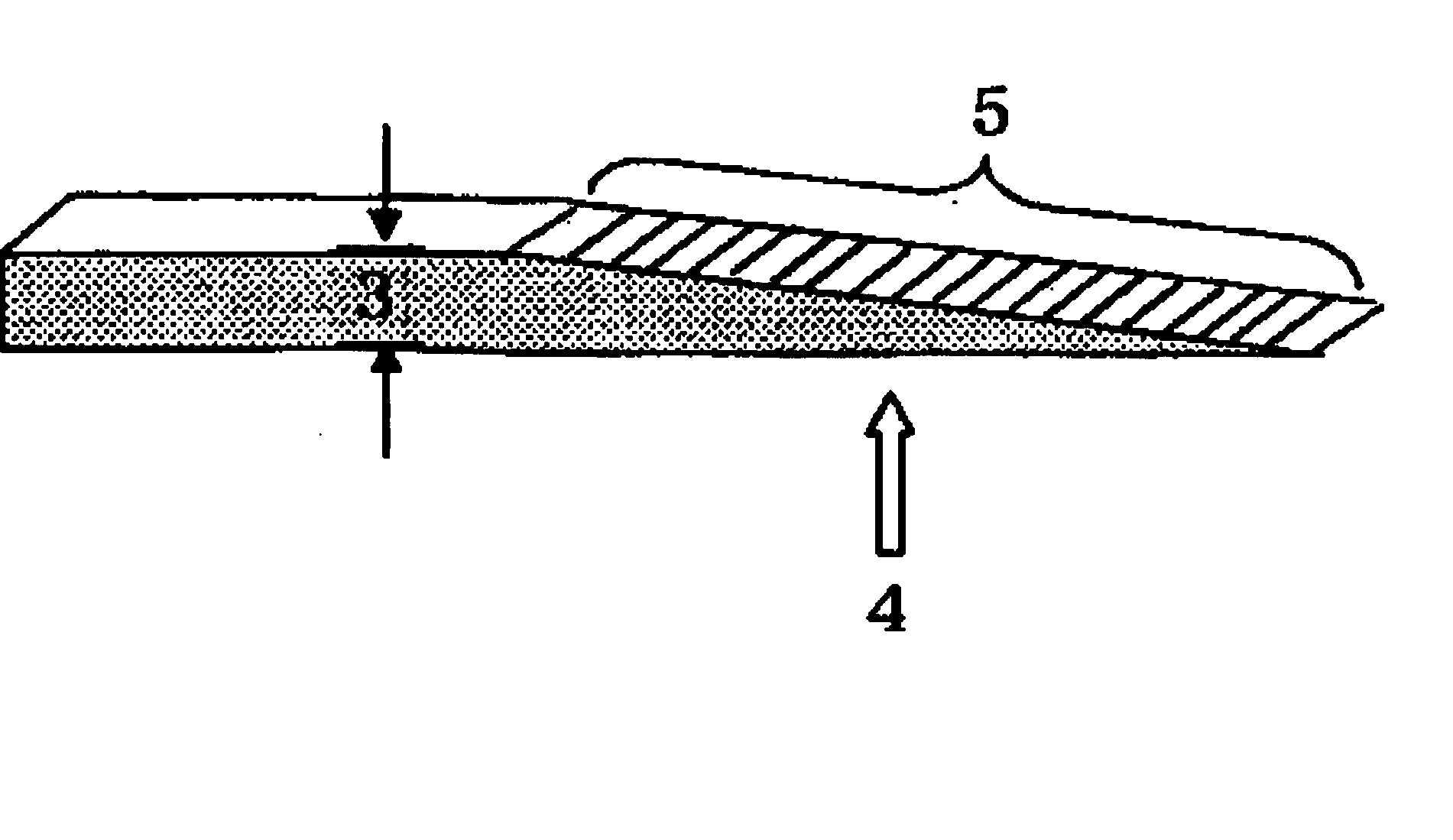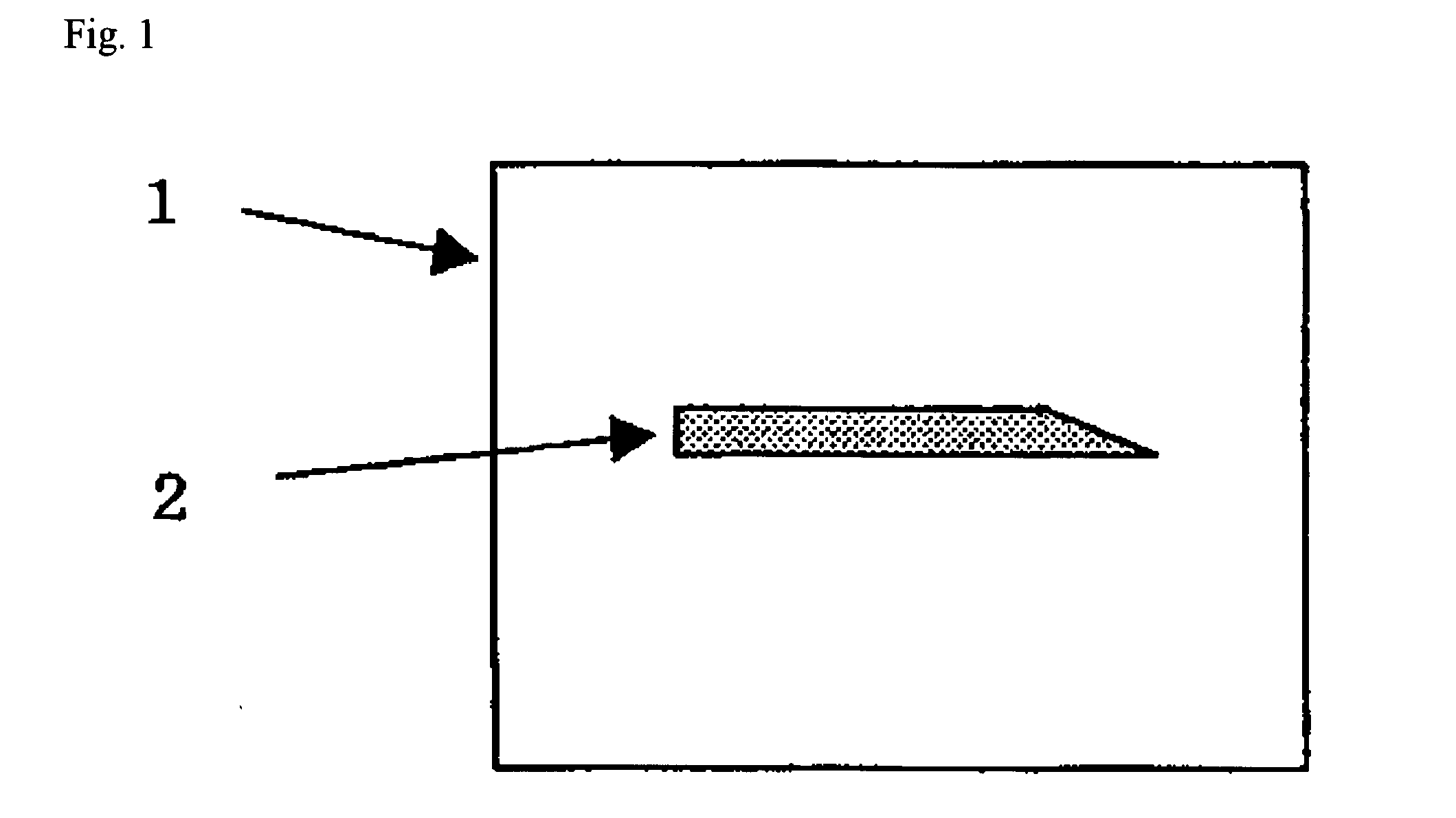Process for Producing Graphite Film
a graphite film and graphite technology, applied in the direction of chemistry apparatus and processes, transportation and packaging, synthetic resin layered products, etc., can solve the problems of inferior adhesive force of graphite, inability to attach to heat generating components or exhibit sufficient heat radiation capability, damage to the surface of graphite, etc., to achieve excellent thermal conductivity, surface hardness, surface adhesion and appearance, and improve heat radiation properties
- Summary
- Abstract
- Description
- Claims
- Application Information
AI Technical Summary
Benefits of technology
Problems solved by technology
Method used
Image
Examples
examples
(Preparation of Polyimide Film A)
[0153] One equivalent of pyromellitic acid dianhydride was dissolved in a solution of 1 equivalent of 4,4-oxydianiline in DMF (dimethylformamide) to obtain a polyamide acid solution (18.5 wt %).
[0154] While cooling this solution, an imidization catalyst containing 1 equivalent of acetic acid anhydride, 1 equivalent of isoquinoline and DMF was added for a carboxylic acid group contained in polyamide acid and thereafter the solution was defoamed. Next, the mixed solution was applied to an aluminum foil at a predetermined thickness after drying. The mixed solution layer on the aluminum foil was dried using a hot air oven and a far infrared heater.
[0155] The drying conditions for preparing a film having a final thickness of 75 μm will be described. The mixed solution layer on the aluminum foil was dried in a hot air oven at 120° C. for 240 seconds to be a self-supporting gel film. The gel film was separated from the aluminum foil, brought into contac...
examples 1 to 5
[0162] A 5 wt % solution of ferrous chloride, ferric sulfate, iron nitrate, cobalt chloride or cobalt sulfate in methanol was applied to the carbonized film A′ obtained from the polyimide film having a thickness of 75 μm or 125 μm. Then, the film was sandwiched in a graphite plate, heated to 2,1 00° C. under reduced pressure and to 3,000° C. from 2,100° C. in an argon atmosphere in a graphitization furnace, and thermally treated at 3,000° C. for one hour to carry out graphitization treatment. A graphite film was thus prepared.
example 6
[0163] A 5 wt % solution of iron nitrate in methanol was applied to the polyimide film A obtained from the polyimide film having a thickness of 75 μm or 125 μm. Then, the film was sandwiched in a graphite plate, heated to 2,1 00° C. under reduced pressure and to 3,000° C. from 2,1 00° C. in an argon atmosphere in a graphitization furnace, and thermally treated at 3,000° C. for one hour to carry out graphitization treatment and carbonization treatment continuously. A graphite film was thus prepared.
PUM
| Property | Measurement | Unit |
|---|---|---|
| temperature | aaaaa | aaaaa |
| thickness | aaaaa | aaaaa |
| thickness | aaaaa | aaaaa |
Abstract
Description
Claims
Application Information
 Login to View More
Login to View More - R&D
- Intellectual Property
- Life Sciences
- Materials
- Tech Scout
- Unparalleled Data Quality
- Higher Quality Content
- 60% Fewer Hallucinations
Browse by: Latest US Patents, China's latest patents, Technical Efficacy Thesaurus, Application Domain, Technology Topic, Popular Technical Reports.
© 2025 PatSnap. All rights reserved.Legal|Privacy policy|Modern Slavery Act Transparency Statement|Sitemap|About US| Contact US: help@patsnap.com



